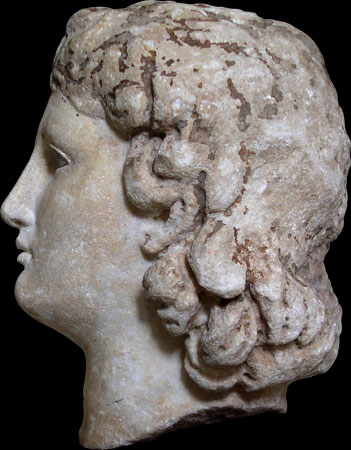

|
|
|

|
|
The Nahman / Hendershott Portrait Head of Alexander
A Graeco-Egyptian Marble Portrait Head of Alexander The Great 3rd Century B.C. The youthful head with short wavy fringe and long loose curls falling down over the nape of his neck, the sockets of his eyes deeply cut originally to have taken black onyx and stone inlaid eyes, with sensitively modeled ‘rings of Venus’ on his neck, traces of original light brown painted gesso on the curls of his long hair. 28 cm high. PROVENANCE: Formerly in the Maurice Nahman Collection, Cairo & Paris (1868-1948), ink inscribed inventory numbers N2451 and M263(?). This portrait of Alexander the Great was believed to have come from Hermopolis (the city of Hermes), modern day Ashmunein, where a temple in Egyptian style had been dedicated to Alexander the Great and his half brother, Philip Arrhidaeus, visible until 1820. Remains of a lintel bearing the names of Ptolemy III Euergetes (246-221 B.C.) and his wife Berenike II survive (1). “ The portrait is sculpted from a very fine grained imported marble, which had to have been imported into the country because Egypt was marble-poor. The style, however, is decidedly Hellenistic, suggesting that the portrait was sculpted by the Alexandrian school founded in Alexandria, Egypt by Alexander the Great. Hallmarks of this school are the so-called ‘rings of Venus’ on the neck which here appear as corpulent muscles, responding to the sharp turn of the head to its right. In contrast to the finely polished flesh of the face, the hair was only summarily treated. The degree of difference in the surface treatment was intentional. The hair on this head would have been completed with the addition of plaster, another hallmark of Hellenistic marbles created in the Alexandrian school. The hair is full and maintains much of its original light brown color, framing the face and falling onto the nape of the neck at the rear. The eyes were originally inlaid with black onyx. The mouth is designed with down-turned corners, imbuing the head with a pathos that is consistent with other representations of Alexander the Great (2). |
|
|